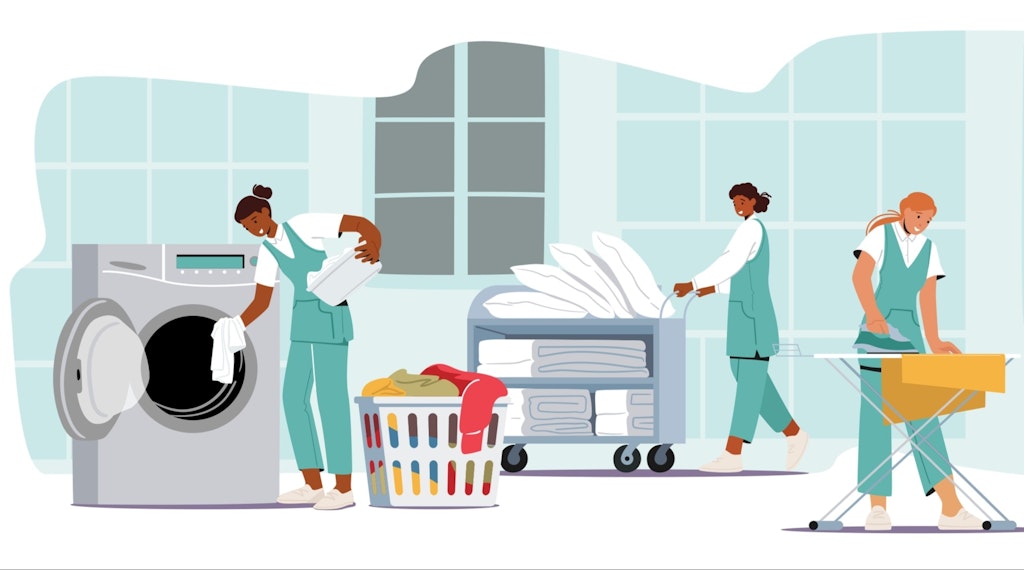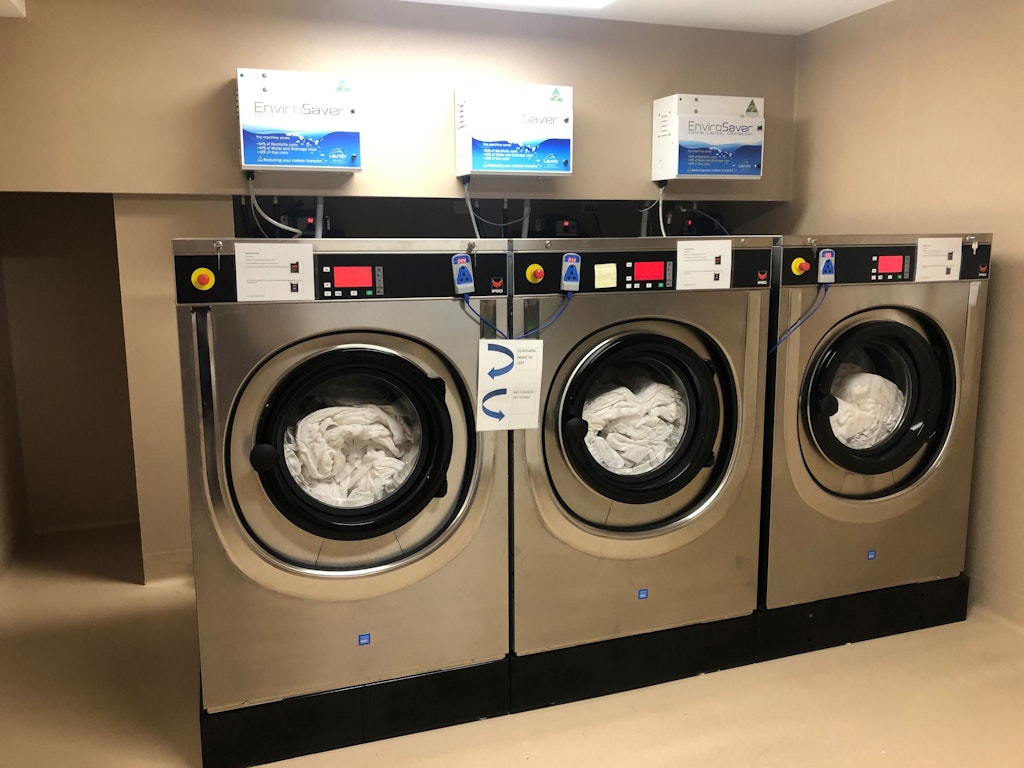Is your laundry working well?
Last updated on 16 November 2023

Providing clean and comfortable living spaces is crucial for the well-being of residents in an aged care facility. A central component of this is an efficient and well-organised laundry operation.
Here are some key points to consider when operating a laundry in an aged care facility:
Compliance with Australian Standards
As we all know aged care is one of the most heavily regulated industries in Australia, as a result, laundry operations are required to meet the Australian Standards. Aged Care auditors refer to AS4146-2000 to obtain a guide on best practice. The main points that are focused on are a clear space between clean and dirty, a one-way workflow and confirmation that all laundry is being disinfected during the wash cycle.
Space planning and layout
Efficient use of space is essential in an aged care laundry. It should be well-organised with designated areas for soiled storage, washing, drying, finishing, folding, and distribution.
A good rule-of-thumb when planning your laundry is to allocate one-third of the available space to the dirty side where soiled storage and the washers are situated and two-thirds of the available space to the clean side of the laundry where the dryers are located and the majority of the staff’s activities are performed. Consider that the clean side of the laundry needs to house a number of linen and personal trolleys as well as portable tables.
Equipment selection
Aged care facilities have unique requirements when it comes to laundry equipment. The equipment needs to be fully programmable so different cycles can be utilised for different scenarios i.e. heavily soiled, sluicing, specific programs for personals versus linen and the ability to disinfect either by using internal heaters or by using ozone.
For instance, an aged care facility with 100 residents needs to process approximately 400 kgs of laundry per day. This equates to a requirement of three 24 kg washers being able to process 72 kgs of laundry, six times a day. It’s also very important that there is a matching dryer paired with each washer. A matching dryer is approximately 50% greater in capacity than its washer as the laundry can be up to 50% heavier when it comes out of the wash. This would require 3 x 34 kg dryers.

Investing in high-quality laundry equipment is crucial for ensuring that the operation runs smoothly. Choose equipment that is reliable, energy-efficient and is well supported by your supplier. Regular maintenance schedules should be established to prevent breakdowns and ensure longevity.
Ergonomics
Providing equipment that supports good ergonomics is essential given the volume of laundry that needs to be processed. This can be easily achieved with having washers and dryers installed at the correct height and also having well-designed aged care specific trolleys that support the logistics both within the laundry space and also around the facility.
Infection control and hygiene
In an aged care environment, infection control is of utmost importance. Implementing robust hygiene protocols, including appropriate handling of soiled linens and use of disinfectants, is crucial to prevent the spread of infections.

Laundry process workflow
Establish a clear workflow for the entire laundry process, from collecting soiled linens to distributing clean ones. This should include procedures for collection, washing, drying, folding, and distribution.
A colour-coded system at the point of collection is the most effective way to ensure pre-sorting of laundry. This ensures that the appropriate wash process is applied to linen or personals that may need additional rinses or detergents. Efficient workflow design will also lead to substantial savings of time and resources.
Staff training and safety procedures
Regularly train staff on proper laundry procedures, including handling of soiled linens, use of detergents and chemicals, and operation of equipment. Additionally, provide training on safety protocols and the use of personal protective equipment (PPE) to minimise risks.
Environmental considerations
Implement environmentally-friendly practices, such as using energy-efficient appliances, eco-friendly detergents and water-saving technologies. Being able to disinfect in cold water by using ozone is one of the most successful transitions in aged care laundry in the last decade. This not only reduces the facility’s ecological footprint but also results in large utility cost savings and is the most effective way to disinfect during the wash process.
Inventory management
A well-organised inventory management system is crucial for keeping track of linens and supplies. Implement a system for monitoring stock levels and reordering supplies in a timely manner to avoid shortages.
Feedback and continuous improvement
Regularly seek feedback from staff and residents to identify areas for improvement. This could include suggestions for workflow optimisation, equipment upgrades, or changes in detergent selection. Continuous improvement is key to maintaining a high standard of service.
In conclusion, a well-designed and efficiently operated laundry facility is essential for maintaining a high standard of care in an aged care facility. By considering these key points, you can ensure that the laundry facility meets regulatory standards, operates smoothly, and contributes to the overall well-being of residents.
Laundry Solutions Australia have been the trusted partner/supplier for laundry equipment and operations over the past 40 years. Throughout this time we have cultivated trust within the aged care sector to ensure that aged care laundries are operating efficiently, effectively and according to the Australian standards.
Call Laundry Solutions today on 1300 666 289 to learn more about how they can help with your laundry operations.